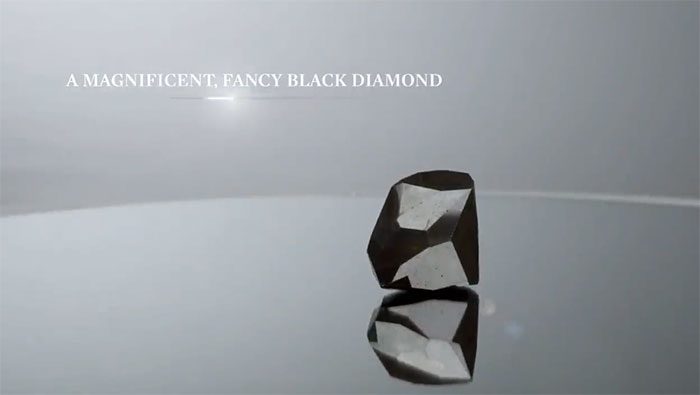Enigma is a type of black diamond (carbonado) and is recognized by the Guinness World Records as the largest cut diamond in the world, weighing 555.55 carats (111 grams) with 55 facets.
In addition to its unusual color and unique shape, one of the most special features of Enigma is that it may have originated from outer space. According to an announcement from Sotheby’s auction house, Enigma was formed by a meteorite impact or came from an asteroid that collided with Earth. However, experts on black diamonds are not certain about this.
Black diamonds have a high density of opaque minerals, particularly graphite, a form of dark gray carbon with a hexagonal structure, and metal sulfide, according to Peter Heaney, a geology professor at the University of Pennsylvania. Sotheby’s describes Enigma as a carbonado diamond. However, not all black diamonds are carbonado. Instead, carbonado is a type of black diamond that is both polycrystalline and porous. Carbonado diamonds also contain uranium-rich phosphate, which creates a radiation halo around the holes on their surface. This characteristic gives them a high ability to absorb white light, rendering them completely opaque and much darker than many other types of black diamonds.
Carbonado is extremely hard and durable due to its polycrystalline nature and numerous pores. This makes them ideal for industrial use, such as drill bits used in the oil and gas industry to penetrate hard volcanic rock. Given its size, it is likely that Enigma is indeed carbonado, but it is difficult to conclude definitively as the diamond has been cut.
All known carbonado diamonds have been found in Brazil or the Central African Republic, dating back 2.6 to 3.8 billion years. During this time, both countries were part of the same supercontinent called Rodinia. Scientists have discovered that black diamonds originated from meteorite impacts in the past, but these are usually very small. “I would be very surprised if a large diamond like Enigma originated from a meteorite impact,” Heaney shared.

Black diamonds have a high density of opaque minerals, particularly graphite.
Some other hypotheses speculate that carbonado diamonds could exist in some asteroids that collided with Earth or formed from a powerful stellar explosion known as a supernova, but there is not enough evidence to prove this. Instead, Heaney suggests that the origin of carbonado is Earth. However, the exact mechanism that produces black diamonds has yet to be determined. Most diamonds are formed under high pressure in the Earth’s mantle that compresses organic carbon. But the oldest carbonado diamonds may have existed before life on Earth, leading researchers to be uncertain about how they formed.


















































